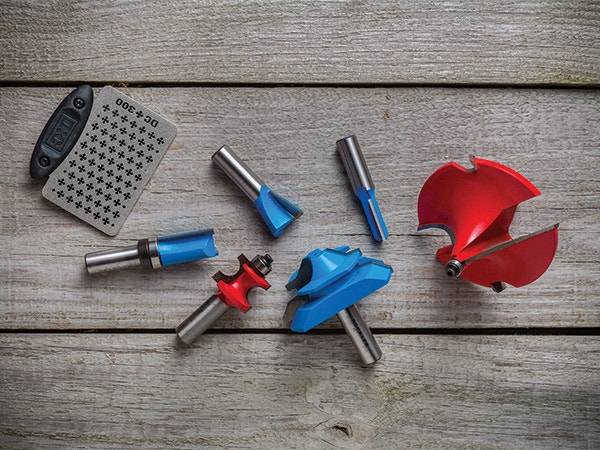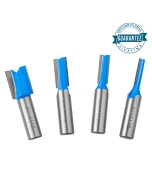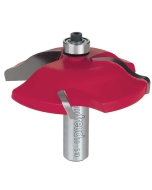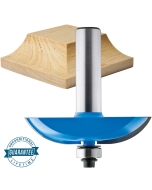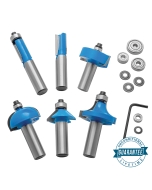Router Bits: Five Fast Facts
Thirty years ago, every serious woodshop had a shaper to cut complicated contours onto solid wood stock. Now router tables and router bits have replaced shapers in many shops. Large bits and better routers have led the way in this workshop trend.
2. Straight talk about straight bits: straight bits are perhaps the most versatile router bits in the shop. They can cut mortises, rabbets, grooves and dadoes, but that's just the beginning. Put a router guide bushing on your router base, and you can cut complicated curves, shapes and inlay openings using a run-of-the-mill straight bit. (And don't forget box joints!)
3. Is all carbide created equal? Nope. Can an ordinary Joe or Josephine determine a bit's carbide quality by looking at it? Nope again. So how do you know? You can do your research and see what the manufacturer says about its carbide. You can also look at price. In router bits, as in so many aspects of life, you get what you pay for. For routing tasks that you will do often, a good quality bit will make your life easier.
4. Staying sharp: If my carbide router bit gets dull, can I have it sharpened? Yes. Should I have my dull router bit sharpened? It depends. This is simply a value equation. Compare the cost of sharpening to a new bit and decide. One trick you can try is using a diamond tool to hone the faces of the carbide cutters on your bit. Its effectiveness is limited, but it can help in a pinch.
5. While some routing operations have to be done in one pass (e.g., a dovetail cut), most cuts benefit from multiple passes of increasing depth. This is especially true when removing large amounts of stock, like when making deep grooves or using a large-diameter cutter like a panel-raising bit. In such cases, you actually save time by making multiple cuts — working smarter, not harder.
Keep the inspiration coming!
Subscribe to our newsletter for more woodworking tips and tricks
